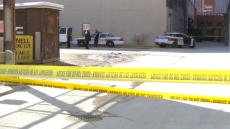OTTAWA — How many refugees, skilled workers and other immigrants will be accepted in Canada this year should become more clear this week with the long-awaited release of the 2016 federal immigration plan.
The annual plan lays out the total number of permanent residents that Canada will accept in the coming year.
The numbers help everyone from provinces to settlement agencies figure out their own service and support requirements for the upcoming year.
The plan is supposed to be tabled each November, but the one for 2016 was delayed by the fall election.
While the Liberals' final deadline for publishing it is Wednesday, it could be released as soon as today when the House of Commons resumes sitting.

Over time, the previous Conservative government shifted the balance of immigration to Canada more in favour of economic immigrants.
But the Liberals have already begun a different approach — a massive increase to the number of refugees Canada will accept thanks to the landmark Syrian refugee program.
Here are five things to watch for in the plan:
1) The Liberals' overall target.
Last year was the first time in three years the federal government had sought to increase the number of immigrants admitted to Canada.
Will the Liberals keep that number — between 260,000 and 285,000 — or answer demands from a number of groups to increase not just overall immigration but specific programs, such as one that allows provinces to directly recruit skilled workers themselves.

2) How the Liberals balance the program. There are three main streams of immigration: the economic stream, the family stream and the humanitarian stream.
Under the previous government, the economic stream was nearly always more than 60 per cent of the total, with the family stream the next largest at an average of 26 per cent and the humanitarian and refugee class at around 9.5 per cent.
But with the spike in refugee arrivals and a promise to increase family reunification programs, the balance under the Liberals is likely to shift.

3) How the Syrian refugee program will affect the broader refugee stream.
While the Liberals have now hit their goal of bringing 25,000 Syrian refugees to Canada by the end of February, they aren't finished. They have pledged to resettle a total of 25,000 government assisted Syrians by the end of the year, and have about 10,000 more to bring.
That's far more than the normal annual intake of government assisted refugees so a question remains as to whether refugees from other parts of the world will also continue to be resettled and how many.
There's also the question of privately sponsored refugees, both from Syria and elsewhere, and how many of those the government will accept. McCallum has previously said Canada could welcome up to 50,000 refugees this year but hasn't broken that figure down.

4) How the plan reflects other campaign commitments on immigration.
The Liberals fulfilled a promise to double the number of applications for the parent and grandparent sponsorship program. But what they've not said is whether that means they'll actually accept more people this year and if so, how many.
They've also committed to giving sponsored spouses permanent residency right away and that would impact total immigration levels as well. How many immigrants Canada accepts each year is also a function of the system's capacity to process applications.
The Liberals have promised to put more money into that system but have not yet announced any new funding, save for Syrian refugees.

5) What happened last year.
The release of the levels plan is usually accompanied by a report on immigration in the previous year.
The Conservatives had sought to admit between 260,000 and 285,000 new permanent residents in 2015, the first time they'd raised the target in three years.
Among the highlights of their program had been the introduction of a new system for admitting skilled workers. How many were ultimately allowed in last year will be a sign of whether the express entry system is working.





